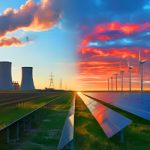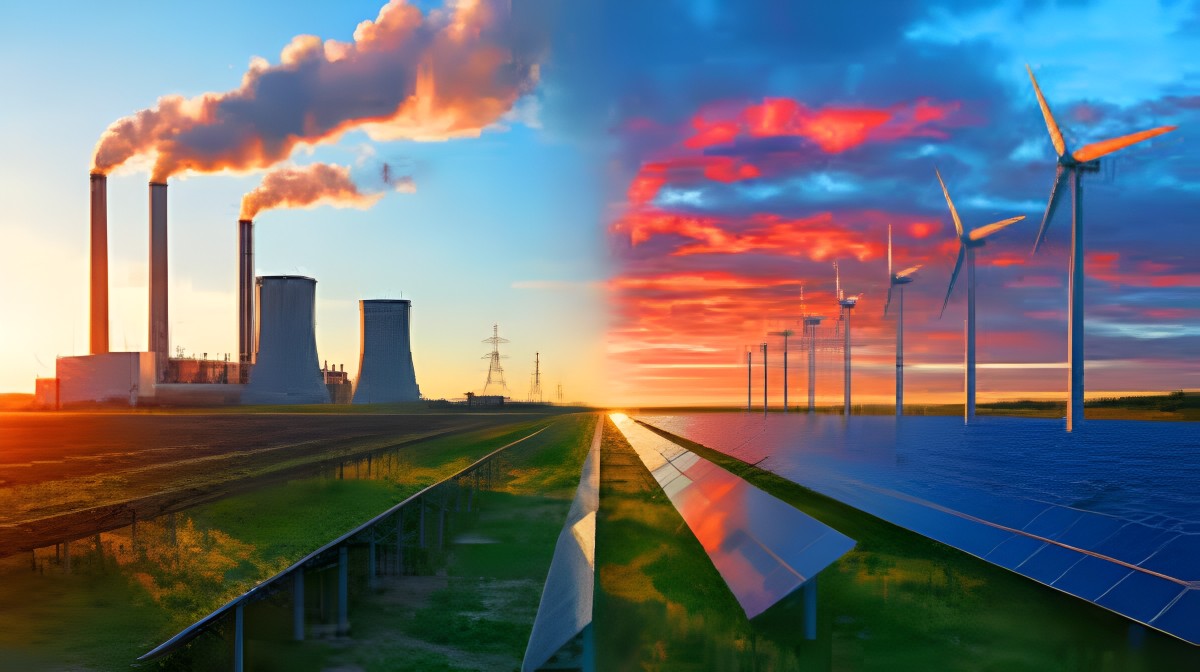For over a century, coal, oil, and natural gas have powered the world’s industries, cities, and transportation systems. But today, the global energy landscape is undergoing its most dramatic transformation in history. Nations, industries, and consumers are rapidly shifting toward cleaner, smarter, and more sustainable Energy Transition. This movement—known as the Energy transition—signals the gradual but undeniable end of fossil fuel dominance.
Also Read: Brazilian Model Larissa Responds to Allegations of Rahul Gandhi’s Vote Chori Connection
1. Why the Energy Transition Is Accelerating
a. Climate Change Pressures
Rising global temperatures, extreme weather events, and international climate goals push countries to cut emissions. The Paris Agreement motivates governments to reach net-zero emissions by mid-century, forcing a move away from fossil fuels.
b. Rapid Growth of Renewable Energy
Solar and wind power have become cheaper than coal and gas in many regions.
- Solar energy costs have dropped by nearly 90% in a decade.
- Wind energy continues to expand with both onshore and offshore projects.
These technologies produce clean energy without the pollution associated with fossil fuels.
c. Technological Advancements
Better batteries, smart grids, electric vehicles (EVs), and energy-efficient appliances make renewable energy more practical. Energy storage helps countries store excess solar and wind power, ensuring stable electricity supply.
d. Economic Competitiveness
Major investors and companies are moving their money away from fossil fuel projects and into renewable energy. Clean energy jobs—solar technicians, EV engineers, and hydrogen experts—are growing faster than traditional energy jobs.
2. Key Forces Ending Fossil Fuel Dominance
a. Electric Vehicles Transform Transportation
The auto industry is shifting rapidly. Many countries are planning to end the sale of petrol and diesel cars in the coming decades. EVs run on electricity, reducing oil demand.
b. Carbon Regulations and Environmental Policies
Governments worldwide are implementing carbon taxes, stricter pollution rules, and incentives for clean energy. These policies make fossil fuels less profitable and renewable energy more attractive.
c. Corporate Net-Zero Commitments
Global companies—including tech giants, manufacturers, and airlines—commit to using renewable energy. Their decisions accelerate the decline of fossil fuel consumption.
d. Public Awareness and Consumer Behaviour
People increasingly choose sustainable lifestyles—solar rooftops, electric scooters, and energy-efficient appliances. Public pressure also influences government policies and corporate decisions.
3. The Rise of New Clean Energy Trends
a. Solar and Wind as Main Power Sources
Countries like China, the U.S., and India lead in installing massive solar farms and wind parks. These sources are now mainstream and often cheaper than fossil fuels.
b. Green Hydrogen
Hydrogen produced using renewable energy may soon power industries, heavy transport, and even aviation. It’s considered one of the most promising solutions for sectors that are hard to electrify.
c. Battery Storage Systems
Advanced batteries store renewable energy for use during nighttime or cloudy days. This technology solves one of the biggest challenges of renewable energy—intermittency.
d. Nuclear Energy Revival
Small Modular Reactors (SMRs) and new nuclear designs offer clean, reliable power with lower risks. Some countries are reconsidering nuclear energy to complement renewables.
4. Challenges of the Energy Transition
The shift is powerful but not simple. Key challenges include:
- High upfront costs for infrastructure like EV charging stations and renewable plants.
- Need for skilled workers in clean energy industries.
- Grid modernization, because old infrastructure cannot handle variable renewable power.
- Economic impact on regions dependent on coal, oil, and gas jobs.
However, countries are investing heavily to solve these challenges through technology, training programs, and policy support.
5. What the Future Looks Like
By 2030:
- Renewables are expected to dominate new power capacity.
- EVs may become more common than fuel-based cars in many countries.
- Oil demand may peak as cleaner alternatives expand.
By 2050:
- Many countries aim to achieve net-zero emissions.
- The fossil fuel share in the energy mix will continue to shrink.
- Clean energy will power homes, industries, transport, and digital infrastructure.
Conclusion
The energy transition marks one of the greatest transformations of the modern world. As solar, wind, green hydrogen, and energy-efficient technologies expand, the dominance of fossil fuels continues to decline. This shift is not just an environmental necessity—it is an economic, technological, and social revolution. Countries and companies that embrace clean energy will lead the future, while those that resist risk being left behind. The end of fossil fuel dominance is not a distant possibility—it is happening now, shaping a cleaner, smarter, and more resilient world for the generations to come.
Also Read: Climate Change in 2025: Are We Too Late to Reverse It?










